Kreuzberg, the vibrant district of Berlin, has long been synonymous with a rich tapestry of local subcultures. Emerging from the counterculture of the 1970s, this area has evolved into a dynamic hub where creativity and social engagement thrive. Influenced by a diverse mix of residents and their innovative urban visions, Kreuzberg’s identity is shaped by grassroots initiatives, experimental arts, and a commitment to social and environmental causes. Delving into Kreuzberg’s history reveals the fascinating story of how this neighborhood has become a culturally significant and unique part of the city.
Key Points
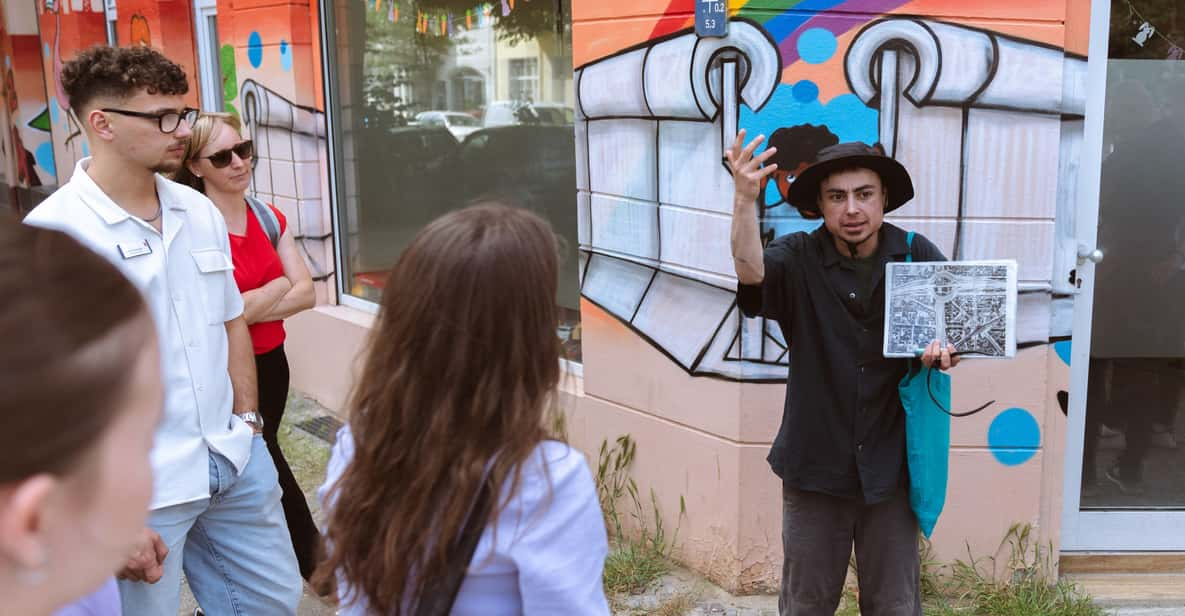
- Kreuzberg’s creative and underground identity emerged from the influential squatter scene and social/environmental projects of the 1970s counterculture.
- Diverse subcultures, including squatters, activists, and self-organized initiatives, continue to shape the everyday rhythms and innovative urban visions of the district.
- Local social and environmental projects, such as community gardens, youth programs, and homeless support services, aim to foster sustainable change and community improvement.
- The enduring spirit of Kreuzberg’s 1970s counterculture is reflected in the district’s thriving arts scene and nonconformist approach to urban development.
- Kreuzberg’s affordability, bohemian atmosphere, and influx of diverse subcultures after the fall of the Berlin Wall have solidified its status as a bastion of counterculture.
It's also worth checking out some other tours and experiences nearby.
Tour Duration and Logistics
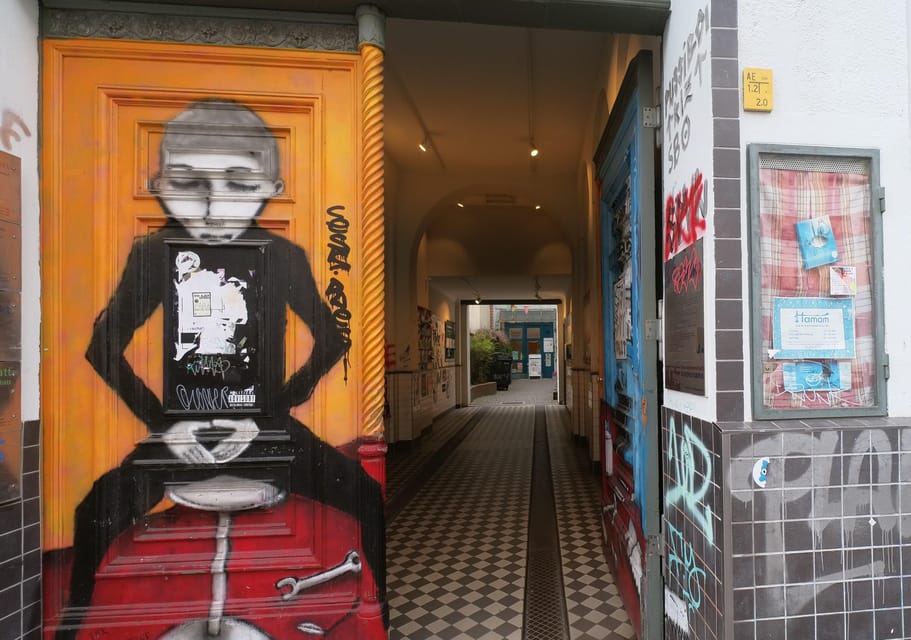
The tour lasts between 2 to 3.5 hours, starting at An d. Schillingbrücke 4 in the Kreuzberg district.
Led by a live tour guide, the guided portion takes 1.5 hours and is available in German, English, and Russian.
The tour finishes at the U Kottbusser Tor station.
It’s wheelchair accessible, and you can cancel up to 24 hours in advance for a full refund.
The tour also offers a "reserve now, pay later" option, making it convenient for visitors.
Kreuzberg: A Creative Crossroad
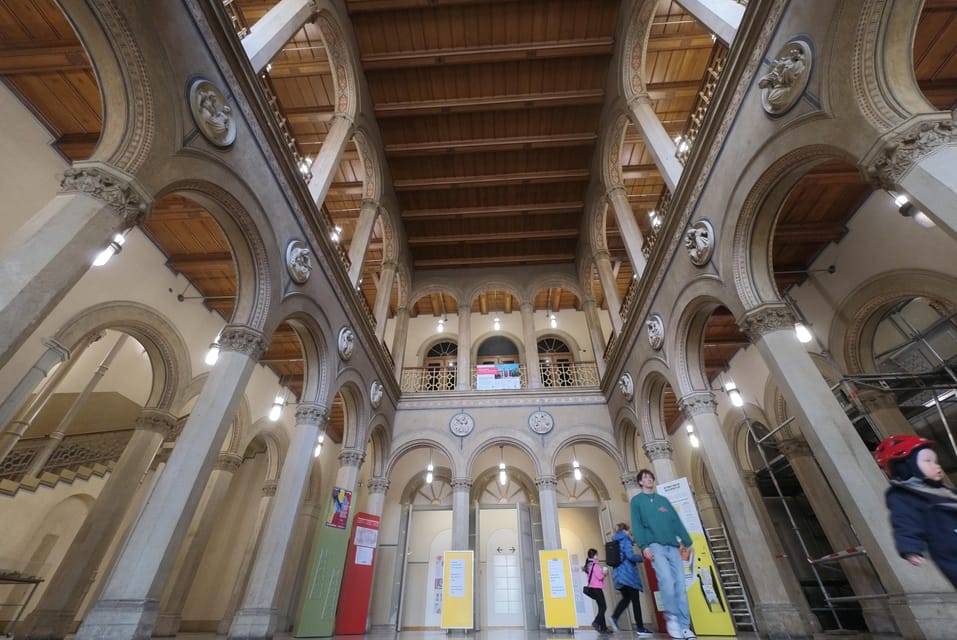
Kreuzberg is known as a dynamic meeting point for creativity, underground movements, and international artists. This neighborhood has a rich cultural heritage, shaped by the squatter scene, social and environmental projects, and the lasting influence of 1970s counterculture. Local residents continue to realize innovative urban visions, shaping the district’s distinct identity.
| Key Aspects | Description |
|---|---|
| Creativity | Kreuzberg is a hub for underground and experimental arts |
| Subcultures | The area’s squatter scene and activist movements are prominent |
| Heritage | The neighborhood’s history during the Berlin Wall era is significant |
| Everyday Life | Social and environmental initiatives influence local community life |
| Contemporary Culture | The 1970s counterculture continues to impact Kreuzberg today |
Subcultures Shaping Everyday Life
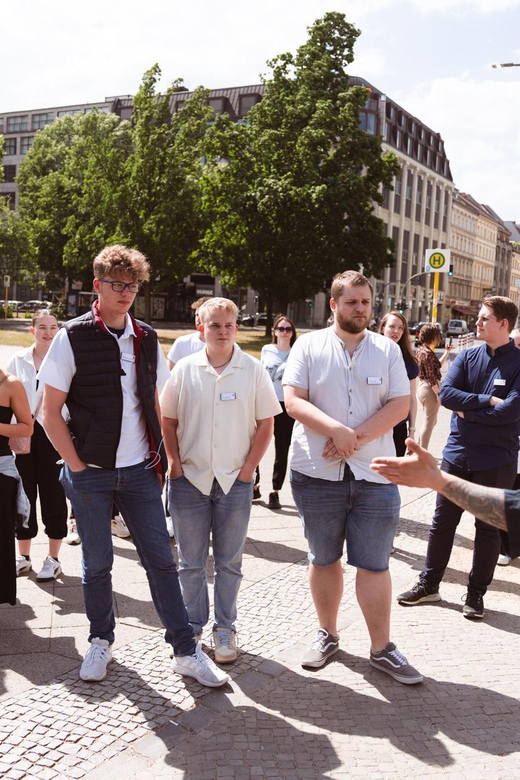
Beneath Kreuzberg’s vibrant creative landscape, its diverse subcultures exert a profound influence on the neighborhood’s everyday rhythms.
From the squatters who pioneered alternative forms of living to the activists championing social and environmental causes, these subgroups have woven their distinct identities into the fabric of local life.
Their impact is palpable in the abundance of self-organized initiatives, experimental arts venues, and politically-charged street murals that dot the district.
Kreuzberg’s residents take pride in their nonconformist spirit, using it to realize bold urban visions and challenge the status quo.
This enduring counterculture hasn’t only shaped the district’s character but also inspired the broader cultural landscape of Berlin.
Local Social and Environmental Projects
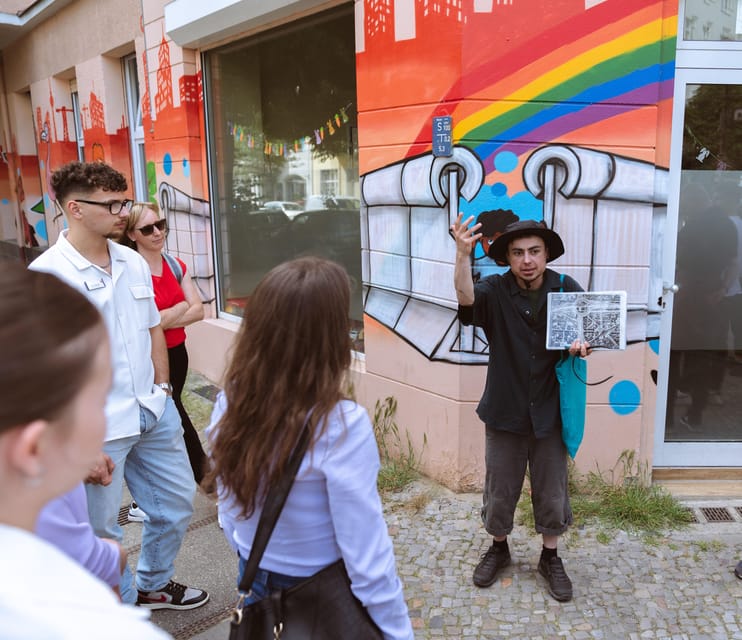
Many of Kreuzberg’s residents actively engage in local social and environmental projects, aiming to address pressing community needs and foster sustainable change. These initiatives range from community gardens and urban farming to youth programs and social welfare support. A table below outlines several key projects organized by locals:
| Project | Focus Area | Organizers | Impact |
|---|---|---|---|
| Prinzessinnengarten | Urban Farming | Local Residents | Promotes food sovereignty, environmental education |
| Nachbarschaftshaus Urbanstraße | Youth Programs | Neighborhood Volunteers | Provides after-school activities, job training |
| Kreuzberger Himmel | Homeless Support | Grassroots Organization | Offers shelter, counseling, job placement services |
| Karamba Community Center | Intercultural Exchange | Immigrant-Led Group | Fosters integration, hosts cultural events |
Influence of the 1970s
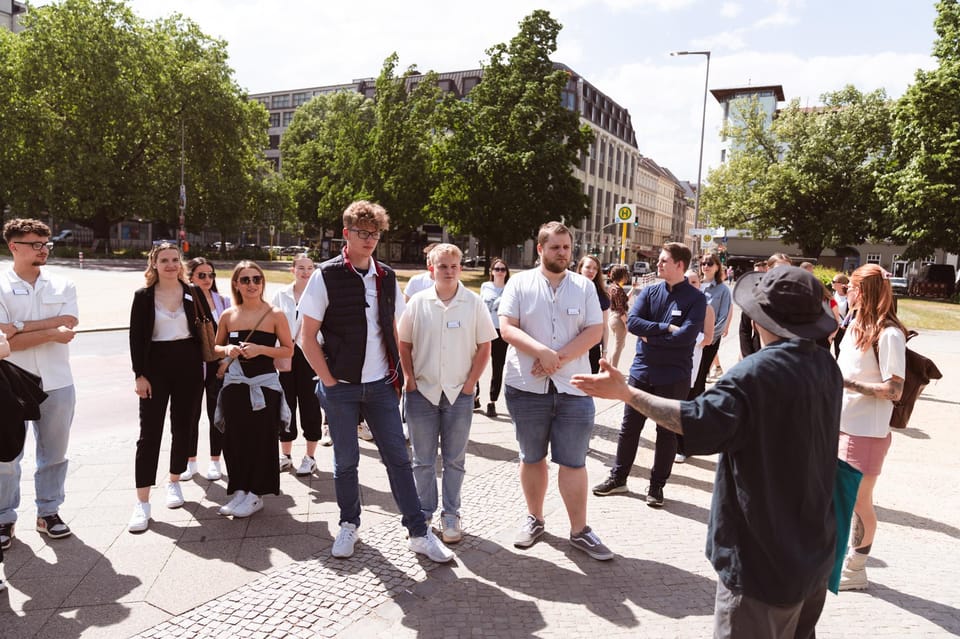
Over the course of the 1970s, Kreuzberg’s subcultures and countercultures experienced a profound transformation that would go on to shape the district’s contemporary identity.
This period saw the emergence of squatter movements, activist groups, and experimental artists who challenged the status quo and advocated for social and political change.
The vibrant underground scene flourished, with squatted buildings becoming hubs for alternative lifestyles, music, and art.
This ethos of resistance and creativity left an indelible mark on Kreuzberg, influencing the development of its distinct cultural landscape and reputation as a hub for nonconformist expression.
The imprint of the 1970s can still be felt in the district’s thriving independent arts scene and its enduring spirit of counterculture.
Scenic Views and Tastings
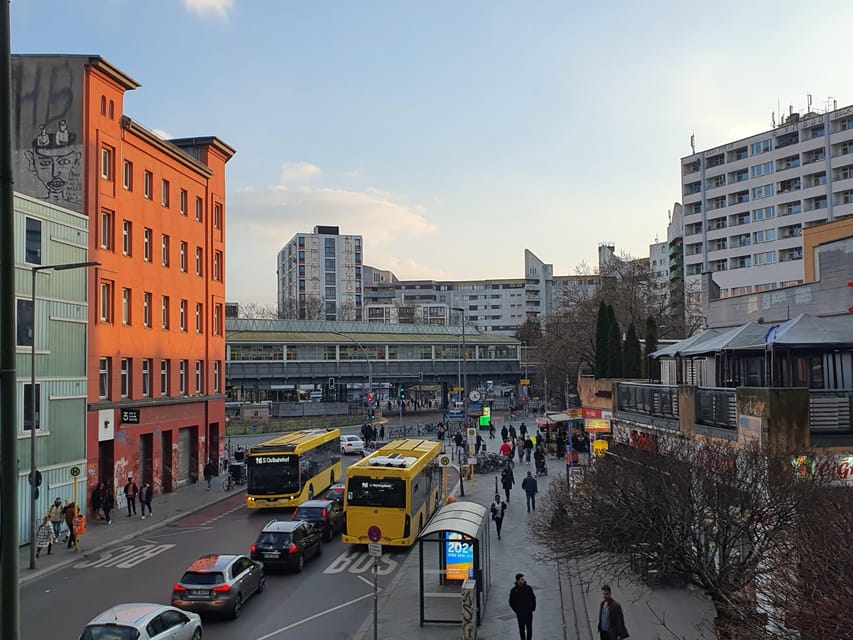
Winding through Kreuzberg’s vibrant streets, the tour offers a captivating visual experience. Participants enjoy scenic photo stops that showcase the district’s unique character.
From striking murals adorning building facades to hidden backyards brimming with life, the tour immerses visitors in Kreuzberg’s artistic and cultural tapestry.
A highlight of the experience is a 15-minute break at Rio-Reiser-Platz, named after the iconic German musician. Here, travelers can savor the best hot chocolate in town, crafted by Berlin Chocolatiers, while soaking in the lively atmosphere.
These sensory delights complement the tour’s informative insights, providing a well-rounded exploration of Kreuzberg’s roots and contemporary significance.
Examining Kreuzberg’s Emergence
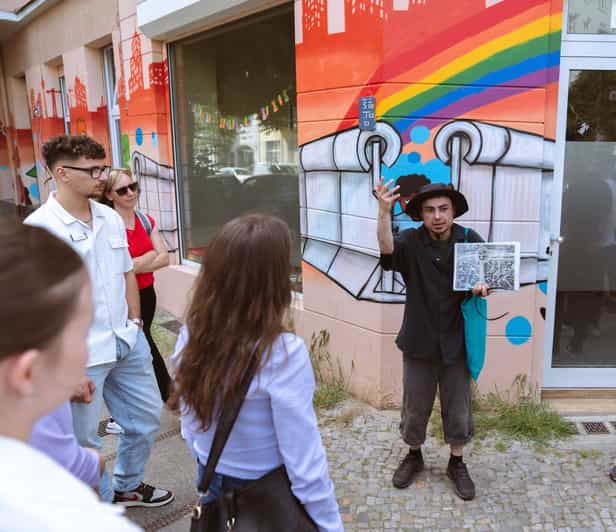
Kreuzberg’s emergence as a hub for creativity, underground movements, and social activism can be traced to a confluence of historical factors.
The district’s affordability and bohemian atmosphere attracted squatters, artists, and political activists in the 1970s, who sought to create alternative living and working spaces.
The Fall of the Berlin Wall in 1989 further transformed Kreuzberg, leading to an influx of immigrants and the growth of diverse subcultures.
Today, the district remains a bastion of counterculture, with residents organizing social and environmental projects that shape the local community and realize urban visions.
Kreuzberg’s rich history continues to influence its contemporary cultural landscape.
Customer Perspectives and Insights
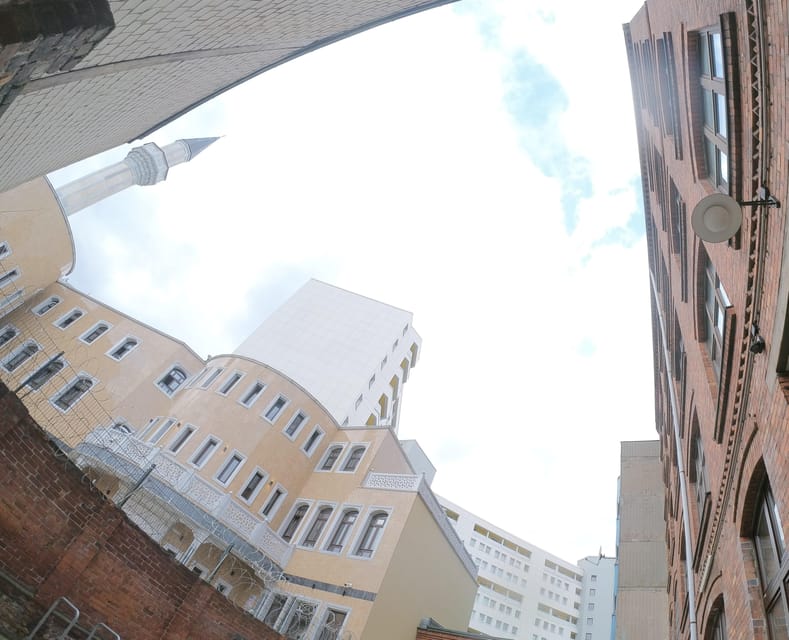
Glowing customer reviews of the Kreuzberg tour underscore its informative and insightful nature.
Tourists praised the guide’s ability to provide valuable insights into the district’s cultural heritage and the factors that shaped its vibrant subcultures. Reviewers noted that the tour offered a unique perspective, shedding light on the influence of the 1970s on contemporary Kreuzberg, as well as the impact of social and environmental projects led by locals.
Despite some visitors’ prior experiences in the area, they found this tour to be one of the most interesting explorations of Kreuzberg, rating it 5/5 overall.
The combination of scenic views, street art discoveries, and tastings contributed to an engaging and well-rounded experience.
Here's a few more nearby tours and experiences we think you'll like.
Frequently Asked Questions
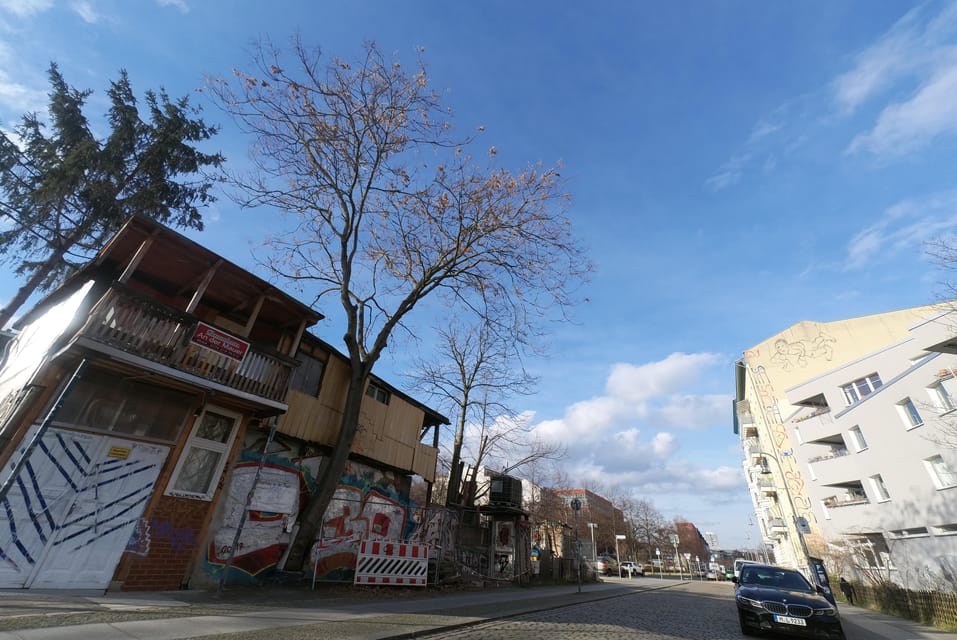
Is the Tour Suitable for Families With Young Children?
The tour appears suitable for families with young children. It’s wheelchair accessible, has a break time, and includes engaging elements like scenic views, street art, and hot chocolate tasting. However, the itinerary may not fully cater to children’s interests.
What Are the Accessibility Options for Those With Mobility Issues?
The tour is wheelchair accessible, allowing those with mobility issues to fully experience the highlights of Kreuzberg. Plus, the guide is prepared to accommodate any special needs to ensure an enjoyable and accessible tour for all participants.
Do the Tour Guides Provide Translation Services for Other Languages?
The tour offers live German, English, and Russian translation services provided by the knowledgeable guides, ensuring a seamless experience for attendees regardless of their native language. This accessibility feature allows for a more inclusive and enriching tour for all participants.
Can I Purchase the Hot Chocolate From the Chocolatiers at the End?
Yes, you can purchase the hot chocolate from the Berlin Chocolatiers during the tour’s break at Rio-Reiser-Platz. The tour includes a chance to taste the best hot chocolate in town from these local chocolatiers.
Is It Possible to Extend the Tour Beyond the Scheduled Duration?
The tour’s duration is fixed at 1.5 hours, but participants can extend their experience by visiting the Berlin Chocolatiers at the end and purchasing the recommended hot chocolate. However, extending the tour beyond the scheduled time is not an option.
Not for you? Here's more of our most recent tour reviews happening neaby
- Berlin: Guided Canoe | Kayak Tour
- Hitler to Stalin – WWII & Cold War Tour (Small Group)
- Berlin: Third Reich & Cold War Walking Tour
- Berlin: 7 Hour Sightseeing Havel Cruise to Potsdam
- Berlin: Classical Concert at Kaiser Wilhelm Memorial Church
- Berlin: Evening JAZZ Cruise With Markus Ehrlichs JAZZ Trio
- Berlin: 3.25-Hour Spree & Landwehrkanal Boat Tour
- From Berlin: Sachsenhausen Memorial Walking Tour
- Berlin Schöneberg: Outdoor Crime Mystery Tour
- Berlin Friedrichshain: Outdoor Crime Mystery Tour
- Berlin: Stand Up Paddling and Yoga on the Spree
- Berlin: Guided Palace Tour by the Insider
- Berlin: EvoGolf Experience
- Berlin: The Porcupines – Frank Lüdecke – Keep Dreaming
- Berlin: the Porcupines-Steglitz, We Have a Problem!
Recap
Kreuzberg’s rich history and diverse local subcultures have shaped its vibrant identity. This district’s evolution from a haven for activists to a hub of creativity and social engagement reflects its ongoing commitment to progressive causes. Kreuzberg’s unique character, rooted in the counterculture of the 1970s, continues to be defined by grassroots initiatives, experimental arts, and a dedication to social and environmental issues, making it a culturally significant area of Berlin.
